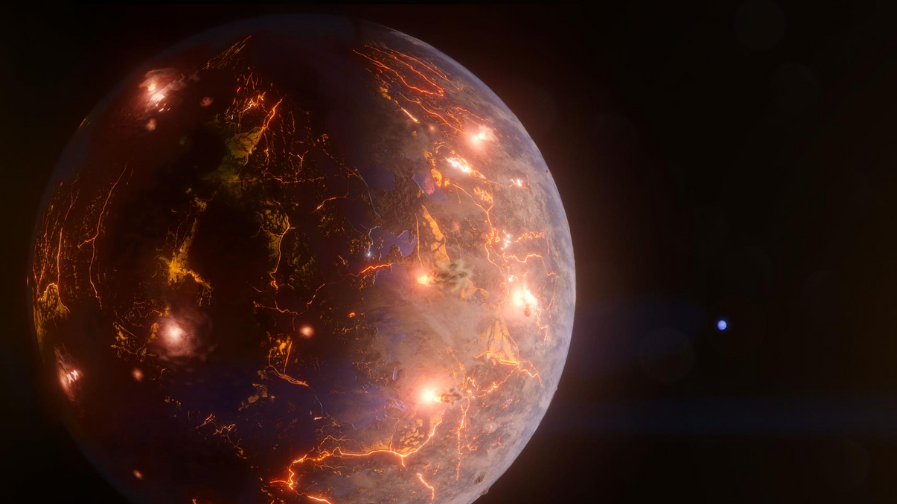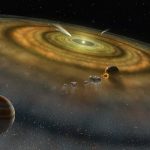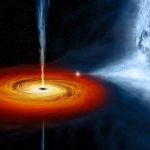Key Takeaways:
- Canadian astronomers discovered an Earth-sized exoplanet called LP 791-18d located 90 light-years away.
- The exoplanet resides within the habitable zone of its star, suggesting the possibility of liquid water and life.
- Unlike Earth, LP 791-18d is tidally locked to its star, resulting in a permanent day side and a permanent night side.
- Scientists theorize frequent volcanic eruptions on the exoplanet due to tidal heating from a neighboring planet.
- The James Webb Space Telescope will be used to study the exoplanet’s atmosphere and search for potential signs of life.

Roughly 90 light-years from our cosmic neighborhood lies a remarkable exoplanet, similar in size to Earth and potentially harboring conditions suitable for life. This exciting discovery is credited to a team of Canadian astronomers led by Professor Björn Benneke of the University of Montreal.
The team’s enthusiasm upon finding this Earth-like world is understandable. As Professor Benneke explains, the discovery offered a thrilling prospect – a chance to unveil a planetary body unlike any known before, potentially revolutionizing our understanding of exoplanets and planetary systems in general.
Exoplanets, planets residing outside our solar system, have been a prime target for astronomers for years, particularly those that might hold the potential for life. However, finding exoplanets that fit the necessary criteria remains a relatively uncommon feat.
“The truly fascinating aspect of these Earth-sized planets,” says Professor Benneke, “is that they reside within a ‘habitable zone’ where temperatures are comparable to Earth’s, making them prime candidates in the future search for extraterrestrial life.”
This habitable zone is a key factor for astronomers. They seek planets with a size similar to Earth’s, orbiting their stars at a distance that allows for liquid water to exist on the surface – not too hot, not too cold. This newly discovered exoplanet appears to tick all these boxes, but it also boasts some intriguing peculiarities that have piqued the scientific community’s interest.
Professor Benneke’s team is dedicated to uncovering Earth-like exoplanets and unraveling the complexities of their atmospheres and compositions. Their discovery was made possible by NASA’s Transiting Exoplanet Survey Satellite (TESS). TESS detects exoplanets by observing dips in a star’s brightness caused by a planet passing in front of it, a phenomenon known as a transit. Additionally, data from the now-retired Spitzer Space Telescope provided clues about the planet’s potential to support life.
“This exoplanet exhibits characteristics remarkably similar to Earth,” Professor Benneke reveals. “Its size and mass are comparable, and its global temperatures are likely within a reasonable range. However, there are also some significant differences.”
One key difference lies in the planet’s rotation. Unlike Earth, it is tidally locked to its star, similar to the Moon’s lock with Earth, meaning the same side perpetually faces the star, resulting in a permanent day side.
Officially designated as LP 791-18d, the exoplanet has also earned a nickname – Reykjavik, inspired by Iceland’s capital city. This moniker stems from the team’s hypothesis about the planet’s composition. They theorize that it might experience volcanic eruptions as frequent as those on Jupiter’s moon Io, the most volcanically active body in our solar system.
“Volcanoes are captivating because they erupt materials to the surface that could potentially include the building blocks of life,” explains Dan Riskin, CTV’s Science and Technology Specialist. “Volcanic activity is always an exciting prospect for astronomers.”
The reasoning behind the predicted volcanic activity lies in the exoplanet’s solar system. LP 791-18d is not the only planet orbiting its host star, a dwarf star significantly smaller than our Sun. Two other planets, LP 791-18b and c, were previously discovered by TESS in 2019. The newfound planet orbits between these two, with planet c, roughly 2.5 times Earth’s size, residing farthest from the star.
Intriguingly, astronomers observed a close encounter between planets c and LP 791-18d. The larger planet’s gravitational pull exerts a significant influence on the smaller one, causing a phenomenon known as tidal heating. This immense friction within LP 791-18d’s interior generates substantial heat, potentially leading to a subsurface magma ocean.
“In our solar system,” explains Caroline Piaulet, a Ph.D. student involved in the discovery, “Jupiter’s moon Io experiences a similar effect from Jupiter and its other moons, and it’s the most volcanically active body we know of.”
The permanent night side of the planet is where astronomers believe water might exist. With potential for ice, water, and volcanic activity, the researchers envision a scenario reminiscent of Iceland – hence the nickname.
While TESS continues its hunt for new exoplanets, the team eagerly awaits a closer look at LP 791-18d with the James Webb Space Telescope, the most powerful and sophisticated telescope ever built.
“Once the James Webb Telescope trains its sights on this exoplanet,” says Riskin, “we’ll gain a much clearer picture. Right now, our understanding is largely theoretical. The new telescope will provide a detailed look, making the entire endeavor truly worthwhile.”
Because the planet’s star is so small — only a little bit bigger than Jupiter — researchers believe that the James Webb telescope should be able to actually see the planet’s atmosphere.
Scientists have already secured observing time with the James Webb telescope for the larger planet, Planet c, which will shed more light on the system.
“Everyone thinks of NASA when they think of space science, but here you have Canadian researchers, a Canadian university,” Riskin said. “And ultimately, it’s that James Webb telescope, which is partly Canadian, that’s going to have a closer look. So Canada has a lot to be proud about.”


